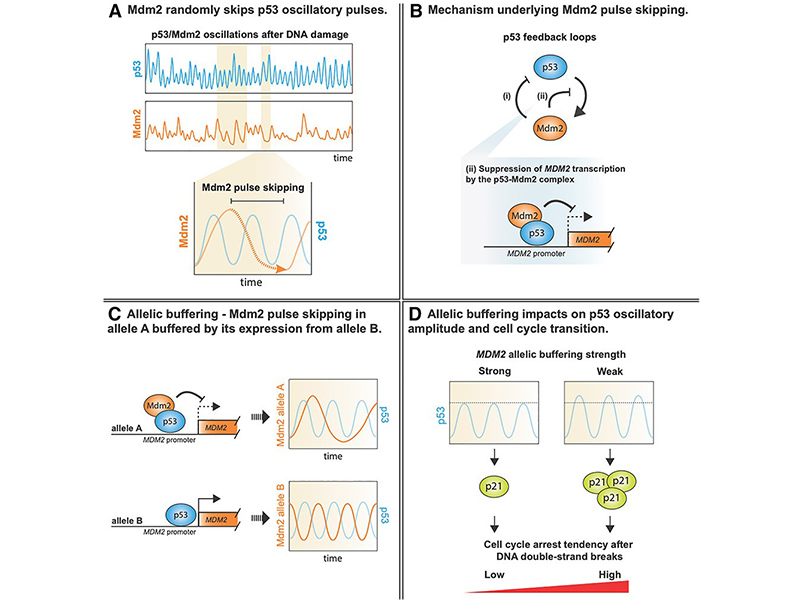Plausible, robust biological oscillations through allelic buffering
Dr. Chen, Sheng-hong - November, 2024
We usually think that biological oscillators emerge from feedback interaction between two molecules just like two people dancing. Feng-Shu Hsieh and others in the Laboratory for Cell Dynamics in 中央研究院 分子生物研究所 Institute of Molecular Biology have made an unexpected observation that a dancing partner could be sometimes "lazy - due to biochemical noise" by not responding the its partner. Feng-Shu then found a buffering mechanism that can help remain the dancing rhythm of another diligent dancing partner. Using stochastic simulations, Chia-Chou Wu showed that this buffering mechanism (i.e., allelic buffering) can be important for robust oscillators to evolve. This work integrating single-cell imaging, mathematical modeling and quantitative chemical perturbations has just been published in Cell Systems; likely the first quantitative/systems biology study that was initiated, investigated and published from Taiwan! Congratulations, folks in the Laboratory for Cell Dynamics!
